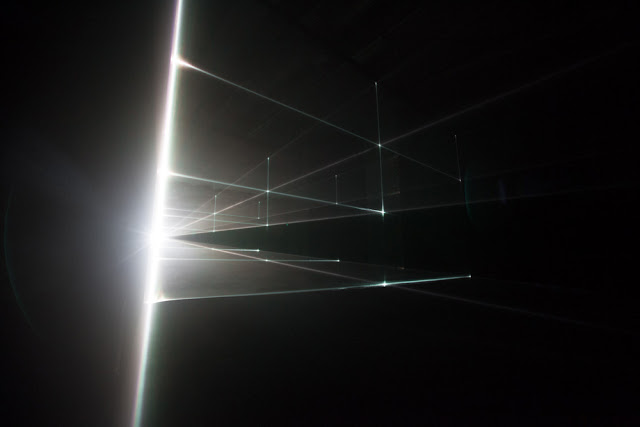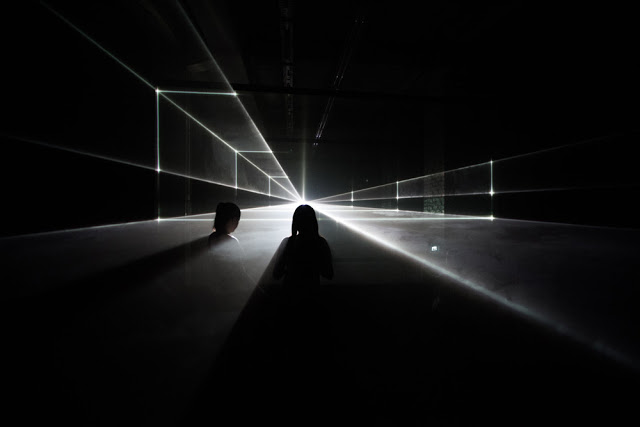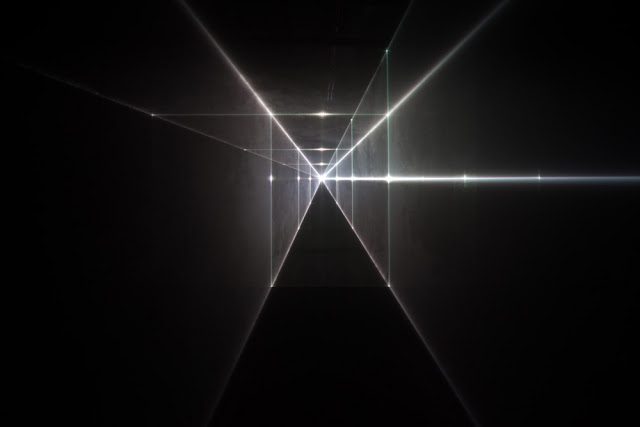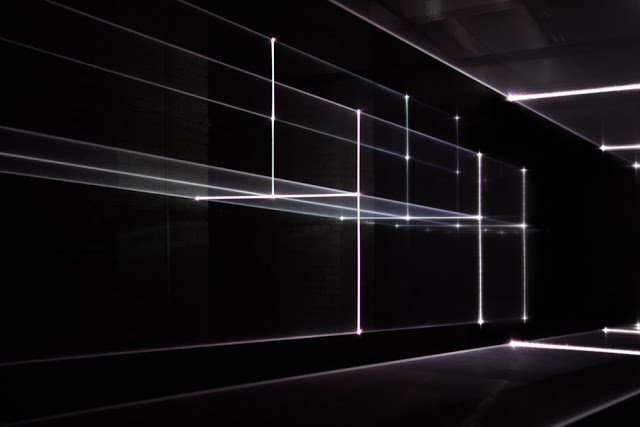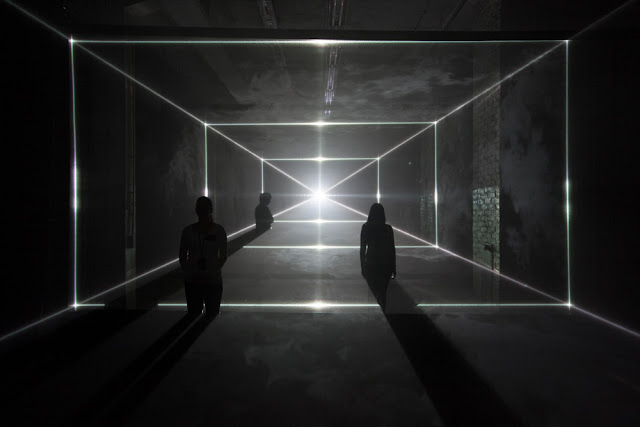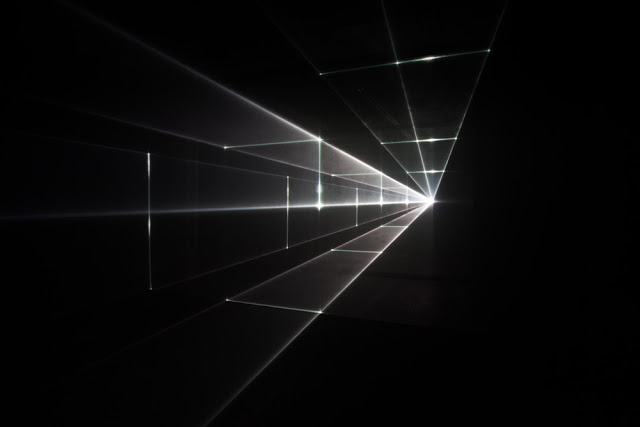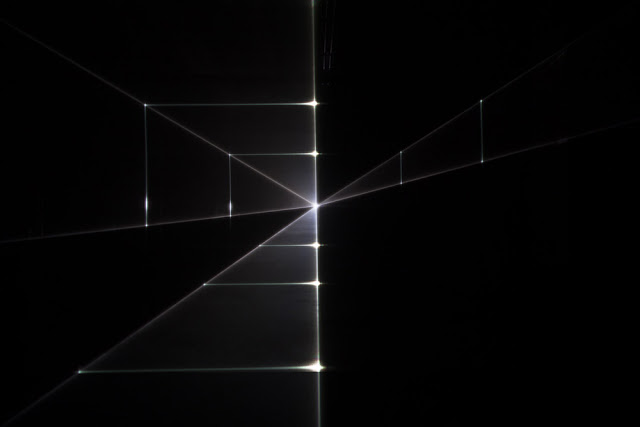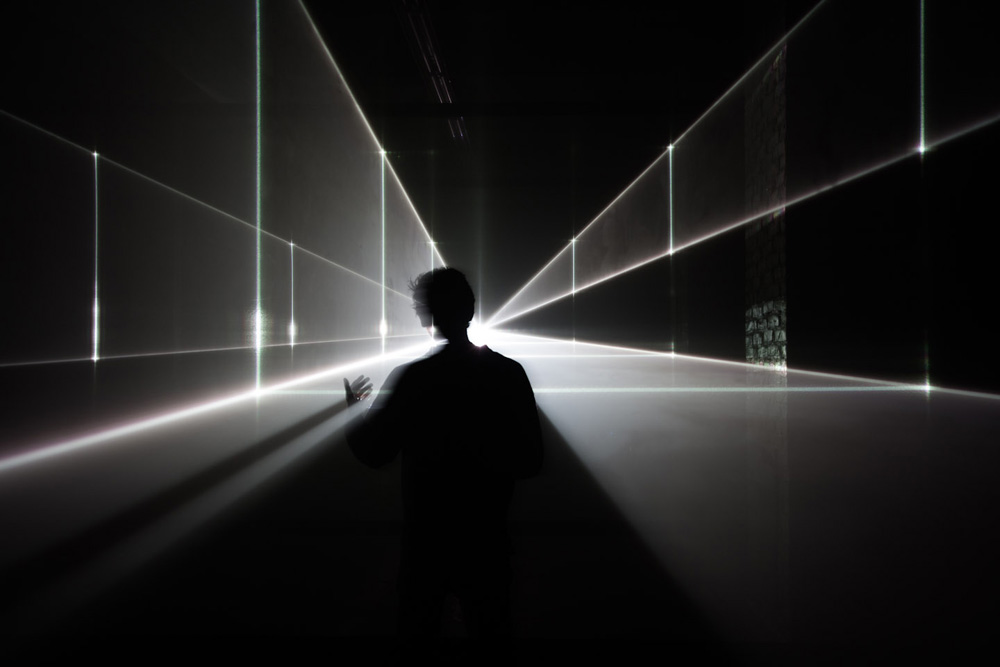United Visual Artists is a British collective of artists founded in 2003 by artist Matt Clark, whose focus is combining modern technology and media with more traditional artistic media like sculpture, public installations as well as performance art. They draw from sources as diverse as ancient philosophy to theoretical science to fashion works that are events in time employing light, movement, and sound.
One of their works titled Vanishing Point was displayed in London/Berlin in 2013-2014, and in 2024, an iteration of it, Vanishing Point 3:1 was again displayed in London.
The work borrows from the idea of the vanishing point in perspective drawing. During the Italian Renaissance, several artists theorized about the representation of 3D space on a 2D plane. An architect, Filippo Brunelleschi pioneered graphical perspective but it was his friend, Leon Battista Alberti who would contribute a seminal understanding of a mathematics of art through his treatise, De Pictura (On Painting) 1450 which illustrates the ‘vanishing point’.
The vanishing point is where all parallel lines in a plane appear to converge at eye level. It can be one point perspective such as railroad tracks that disappear into the horizon. It could be a two-point perspective where there are two vanishing points like if you were standing at a street corner and can see two sides of the same building, both of their ends stretching in two different directions. A three-point perspective is when you view a building from above and so on.
Vanishing Point (2013-14) is inspired by sketches of Alberti, Leonardo DaVinci, and Albrecht Dürer and is an installation that projects beams of light within the exhibition space. UVA is interested in “creating the illusion of light as a physical material”. As founder Matt Clark describes in an interview, “what amazed me was the power of light in its most minimal form. There’s something very primal about our attraction to light; there’s a very seductive quality to it that’s hard to explain.” This property is used very elegantly to explore our relationship with space in Vanishing Point. The laser projections are not fixed, they are unpredictable, chaotic one minute, calm the next, fluctuating to construct different geometries. This immersive display of dancing and disappearing vanishing points is intensified by sound.
Vanishing Point 3:1 (2019) is a reconfiguration of the original work to fit a new space, 180 The Strand. Here, white beams are projected from a vanishing point to perform the same transformation of perspective as the original. The sound corresponds to the speed and position of the light, varying in pitch and tone accordingly. The effect is both magical, and cinematic as the audience’s bodies do not disrupt the paths of the laser beams, and are truly immersed within these bright arbitrary lines in a dark room. With no sight of the beginning and end of the room, the viewer becomes part of this Rubik’s cube of perspective play.
This transporting effect through a minimal, spatial re-design is the aim of UVA in that they want to provide audiences with something extraordinary to both feel, and contemplate.
Photography courtesy UVA:
